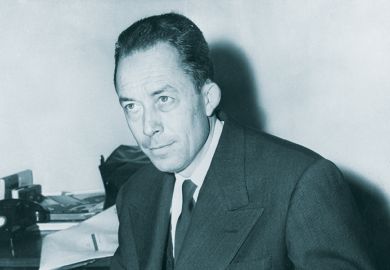One of the best jokes in the staff room at Forest Hill Comprehensive School was the story of the English teacher who had grown so tired of trying to control his class that he would routinely march in and tell the assembled boys that he was offering a cash prize of a whole pound to the boy who could write the longest essay in the next 45 minutes. The award, he stressed, was irrespective of merit. The only criterion was length.
This always struck me as a rather imaginative alternative to the rote essays that were set at my own secondary school. Term after term, we would be invited to write at least three pages on such mind-numbing topics as "How I spent my holiday", "My hobby" and "The story of a penny".
As I lacked anything resembling a hobby and preferred never to remember my family holidays, I invariably settled for "The story of a penny". You will remember the format. There was this penny and one day it was given as change in a cake shop to a small boy who then took it to school where he put it in a poor box from which it was passed on to a tramp who in turn kept the penny in his back pocket as a lucky talisman until one day he put it into a machine in an arcade and won £50 and lived happily every after.
This banal story of what now might be called the biography of a commodity kept returning to me as I read through this rather uneven collection of essays on the manner in which a large range of material objects - a childhood toy, mother's old rolling pin, a yellow raincoat, a bowl of apples, some ancient photographs - can become "companions to our emotional lives or provocations to thought".
According to the editor of the collection, Sherry Turkle, we have neglected the power of things in our life partly because it smacks of materialism (or even hobbyism) and partly because academics have come to regard abstract thinking as the only valid form of intellectual inquiry. But thinking with and about things not only helps to defamiliarise the world around us, it brings philosophy down to earth. It also reminds us of the times when objects produce us. We may, for example, think that we have a personal organiser but a moment's careful reflection on the way it comes to dominate our lives would allow us to realise the way in which the organiser has us.
Of course, the quintessential example of an evocative object is Proust's madeleine, which prompted not a mere 2,000-word essay but seven volumes of celebrated prose. Turkle quotes the moment of truth: "I raised to my lips a spoonful of the tea in which I had soaked a morsel of the cake. No sooner had the warm liquid mixed with the crumbs touched my palate than a shudder ran through me and I stopped, intent upon the extraordinary thing that was happening to me... at once the vicissitudes of life had become indifferent to me, its disasters innocuous, its brevity illusory - this new sensation having had on me the effect which love has of filling me with a precious essence, or rather this essence was not in me it was me."
Turkle was honest to quote Proust but perhaps not wise. For not all the academics who accepted her invitation to describe their own evocative objects display anything resembling a Proustian sensibility. There are, though, some small pleasures.
Matthew Belmonte's description of the glaringly bright yellow raincoat that kept him dry on rainy days on his way to school subtly allows him to connect the manner in which the coat insulated him from the outside world with his later studies of people with autism "whose central, daily challenge is the work of imposing internal narrative flow on a deluge of external sensory inputs".
There is also a fascinating internal argument between those writers such as Susan Yee, who (in her essay on touching and handling Corbusier's original drawings) regard the increasing digitalisation of the world as reducing the evocative power of original objects, and those such as Annalee Newitz, who chooses to celebrate her laptop ("I love it. It's practically a brain prosthesis. When I use it in bed, I remember to keep the blankets from covering its vents so it doesn't overheat").
But in the end it is difficult to avoid the conclusion that our readiness to accept the evocative power of objects depends on the evocative power of the writer who commends them to our attention. Proust and Barthes and Levi-Strauss and Turkle herself can manage the task admirably. In lesser hands, the result can sometimes arouse little more than dispiriting memories of those rather dull school essays.
Laurie Taylor is a fellow of Birkbeck College.
Evocative Objects: Things We Think With
Editor - Sherry Turkle
Publisher - MIT Press
Pages - 352
Price - £15.95
ISBN - 9780262201681
Register to continue
Why register?
- Registration is free and only takes a moment
- Once registered, you can read 3 articles a month
- Sign up for our newsletter
Subscribe
Or subscribe for unlimited access to:
- Unlimited access to news, views, insights & reviews
- Digital editions
- Digital access to THE’s university and college rankings analysis
Already registered or a current subscriber? Login



